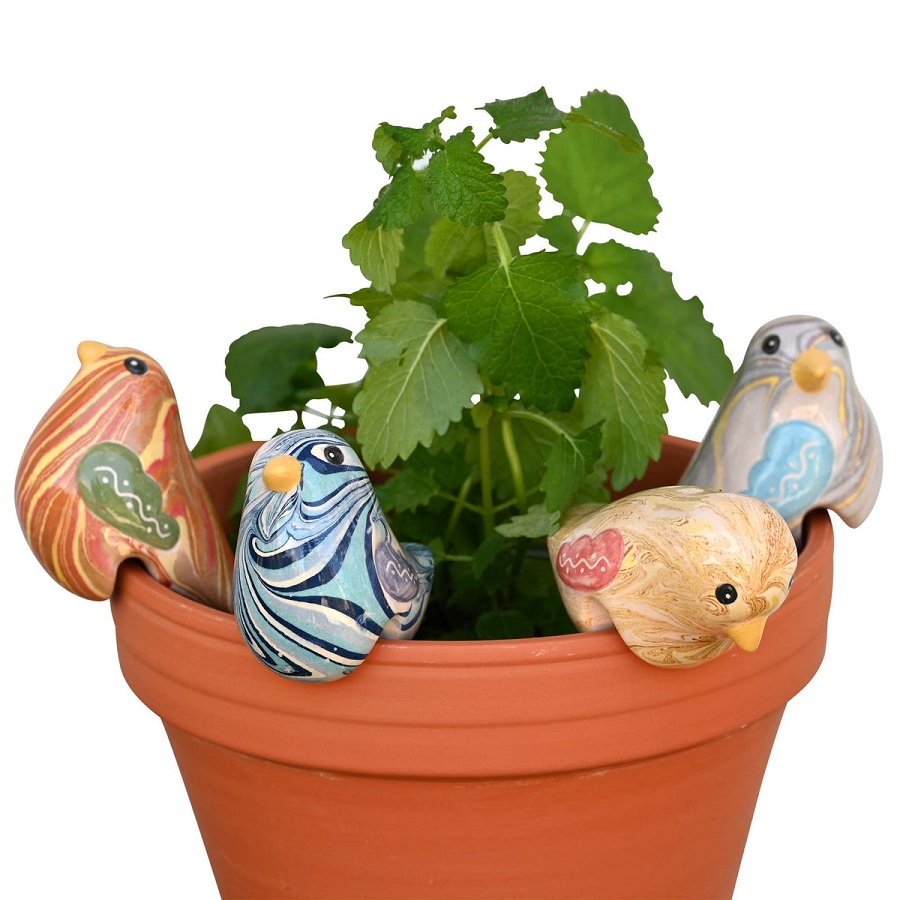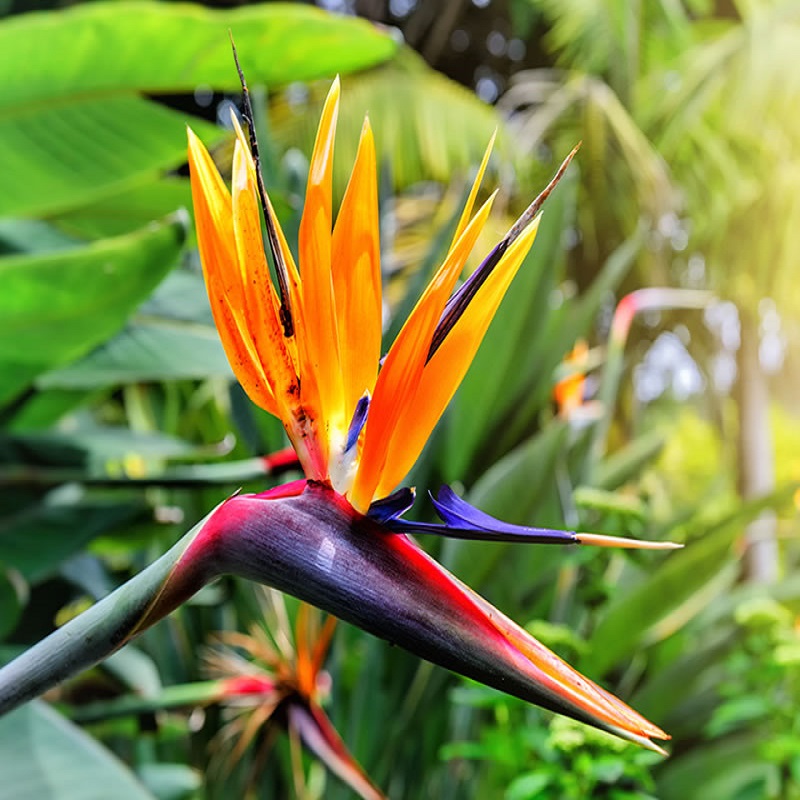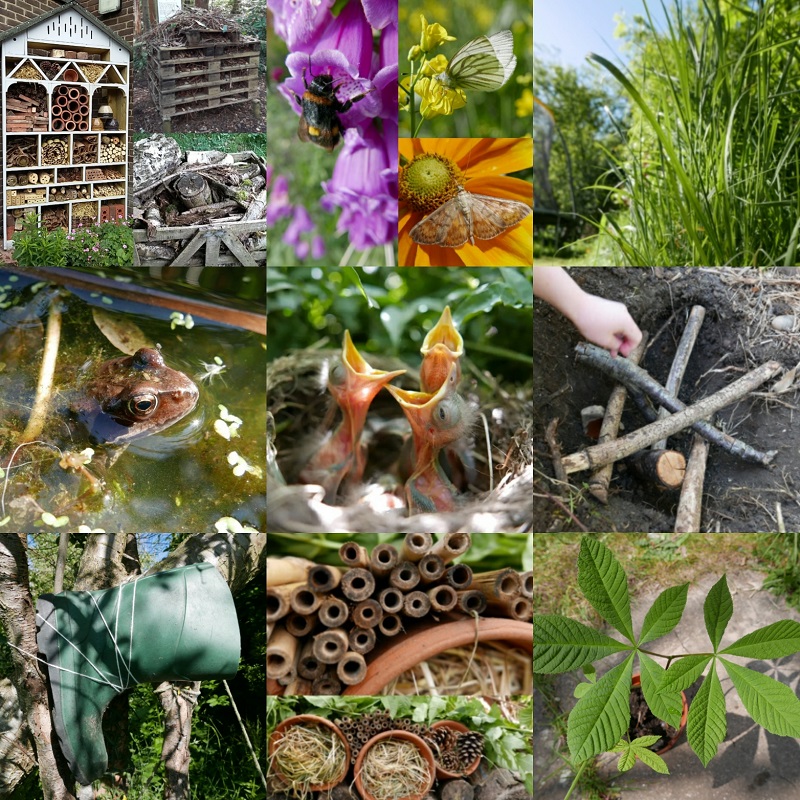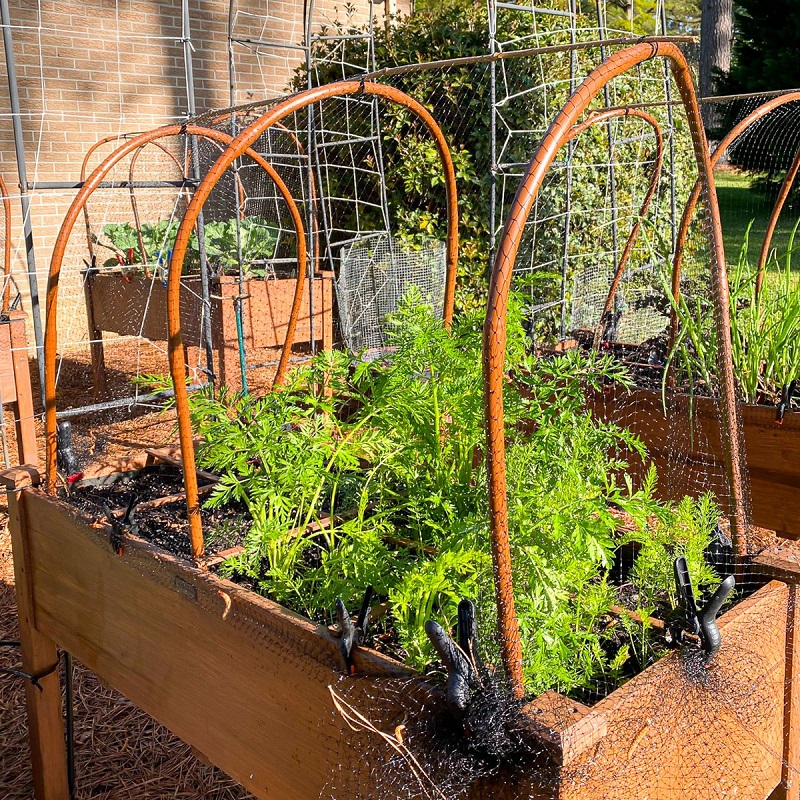Birds are often seen exploring various environments, and one common behavior that puzzles many garden enthusiasts is their tendency to dig in flower pots. This article delves into the reasons behind this behavior, examining the instinctual, environmental, and behavioral factors at play. Understanding why birds dig in flower pots can help gardeners implement strategies to protect their plants while appreciating the fascinating behaviors of these creatures.
The Instinctual Drive: Foraging for Food
Natural Foraging Behaviors
Birds are inherently driven by their need to forage for food, a behavior rooted in their survival instincts. In the wild, birds search for seeds, insects, and other edible materials. This instinctual drive does not disappear when they enter urban or suburban environments; rather, it adapts to available resources. Flower pots often become a target because the soil can harbor various insects or even seeds that birds might find appealing.
Soil as a Treasure Trove
The soil in flower pots can be incredibly rich in nutrients and biodiversity. Earthworms, grubs, and other small organisms thrive in moist, nutrient-dense environments, making them attractive to birds seeking food. Additionally, many potted plants may shed seeds or attract pests that birds naturally gravitate towards. Thus, what appears to be random digging is often a focused effort on the bird’s part to locate a potential meal.

Seasonal Variations in Foraging
Additionally, seasonal shifts can significantly influence bird foraging behavior. During spring and summer, birds are more likely to dig in flower pots as they prepare to feed their young or replenish their own energy reserves. In contrast, during fall and winter, their foraging habits may shift, but the digging behavior can still occur as they search for stored seeds or insects that have burrowed deeper into the soil. Understanding these seasonal patterns can help gardeners anticipate which times of year might see increased activity from their feathered friends.
Environmental Factors: The Appeal of Urban Gardens
Gardens as Habitats
Urban gardens serve as vital habitats for many bird species, particularly in environments where natural landscapes have been altered or diminished. Flower pots in urban areas provide not only food sources but also shelter and breeding grounds. The compact nature of flower pots makes them inviting for birds exploring the area, especially if they are already familiar with urban gardening setups.
Availability of Resources
The abundance of resources in urban gardens, such as water features, bird feeders, and flowering plants, makes them attractive to birds. Flower pots can act as microhabitats, offering a variety of insects and seeds along with the protective cover of the plant foliage. For many birds, the convenience of a readily available food source outweighs the risks associated with digging in unfamiliar territory.
Human Interaction and Bird Behavior
Interestingly, human interaction plays a role in altering bird behavior. Gardeners who regularly tend to their flower pots may inadvertently create an environment that attracts birds. Frequent watering, fertilizing, and pruning activities can expose new food sources, making flower pots even more appealing. Understanding this relationship can help gardeners adapt their practices to minimize unwanted digging while still fostering a welcoming environment for birds.
The Role of Nesting Behavior
Seeking Materials for Nest Building
Another reason birds dig in flower pots is their instinct to gather nesting materials. Many birds are known to collect twigs, leaves, and other organic materials to construct their nests. Flower pots, particularly those with loose soil or decaying plant matter, can provide easy access to these essential resources.
Timing and Nesting Seasons
The timing of this behavior often coincides with the nesting season, typically during spring when birds are looking to build or repair their nests. Flower pots offer a convenient source of materials, and birds may dig through the soil to extract soft fibers, dried leaves, or even small roots to use in their nests. This behavior highlights the adaptability of birds as they seek out materials in urban environments that may be scarce elsewhere.
Competition for Resources
However, the quest for nesting materials can lead to competition among different bird species. When multiple birds are vying for the same resources, this can result in increased digging in flower pots as they attempt to secure the materials they need. Gardeners may notice a higher frequency of bird activity during these peak nesting periods, leading to further inquiries about how to protect their plants from potential damage.

Behavioral Patterns: Exploring Curiosity
The Role of Curiosity in Avian Behavior
Birds are inherently curious creatures, and this trait drives much of their exploration, including digging in flower pots. Their desire to investigate new environments often leads them to engage in behaviors that may seem perplexing to humans. This curiosity is crucial for their survival, as it enables them to discover new food sources and understand their habitats better.
Investigative Behaviors in Flower Pots
Flower pots present numerous stimuli that can pique a bird’s curiosity. The texture of the soil, the presence of plants, and even the movement of insects can all attract a bird’s attention. Digging can therefore be seen as a form of investigation—an exploration of what lies beneath the surface. By scratching and pecking, birds gather information about their environment, which can be vital for their foraging success.
Learning Through Experience
Moreover, past experiences play a significant role in shaping a bird’s behavior. Birds that have previously found food or nesting materials in flower pots may return to these locations based on memory and learned behavior. This reinforces the notion that their digging is not arbitrary but rather a calculated risk based on prior success. Understanding this aspect of their behavior can help gardeners appreciate the complexity of avian interactions within their gardens.
Impact on Garden Health: Benefits and Drawbacks
Positive Contributions to Soil Quality
While the sight of birds digging in flower pots may be concerning to gardeners, this behavior can also have positive implications. Birds can contribute to soil aeration and pest control, both of which are beneficial for plant health. Their digging can help break up compacted soil, allowing for better water penetration and root growth.
Pest Management Benefits
Additionally, by foraging for insects, birds can help manage pest populations that might otherwise harm plants. Many birds consume harmful insects, thus acting as natural pest controllers. This dynamic can enhance the overall health of a garden, making it more resilient to infestations while allowing gardeners to enjoy the benefits of attracting birds.
Potential Risks to Plants
On the flip side, excessive digging can pose risks to the plants in flower pots. Birds may inadvertently uproot seedlings or damage delicate roots while searching for food or materials. Moreover, the disturbance caused by their digging can lead to soil erosion or the disruption of established plants. Gardeners must strike a balance between fostering a welcoming environment for birds and protecting their plants from potential harm.
Strategies for Mitigating Bird Activity
Physical Barriers and Protective Measures
For gardeners concerned about bird digging, several strategies can be employed to mitigate this behavior. One effective approach is the use of physical barriers such as netting or mesh. Covering flower pots with fine mesh can prevent birds from accessing the soil while still allowing sunlight and water to reach the plants.
Alternative Feeding Stations
Another strategy involves creating alternative feeding stations to divert birds away from flower pots. By offering bird feeders stocked with seeds or suet, gardeners can provide a dedicated source of nutrition that may reduce the likelihood of birds digging in pots. Placing these feeders at a distance from flower pots can encourage birds to explore other areas of the garden.
Embracing Coexistence: Balancing Nature and Gardening
Appreciating Bird Behavior
Ultimately, understanding why birds dig in flower pots allows gardeners to appreciate the complexity of avian behavior. Rather than viewing birds solely as nuisances, recognizing their role in the ecosystem can foster a sense of coexistence. Birds contribute to the balance of nature, and their presence can enhance the beauty and vitality of a garden.
Creating Bird-Friendly Spaces
Gardeners can embrace this coexistence by designing bird-friendly spaces that cater to both plant health and avian needs. By incorporating native plants, water features, and safe nesting sites, gardeners can create an environment where birds feel welcome and supported. This approach not only enriches the garden but also promotes biodiversity and ecological health.

Conclusion: A Deeper Understanding of Avian Behavior
Understanding why birds dig in flower pots opens a window into the complex behaviors of these fascinating creatures. From their instinctual foraging and nesting behaviors to their curious explorations, every action has a purpose rooted in survival. While gardeners may face challenges associated with bird activity, recognizing the benefits these creatures bring can lead to a more harmonious relationship with nature.
